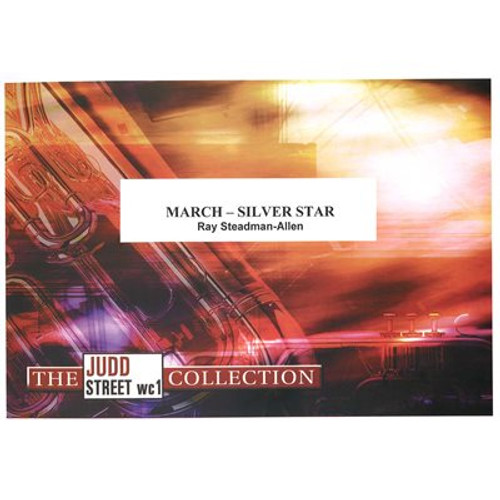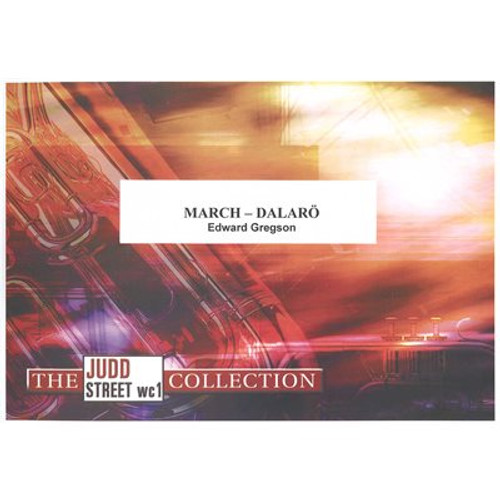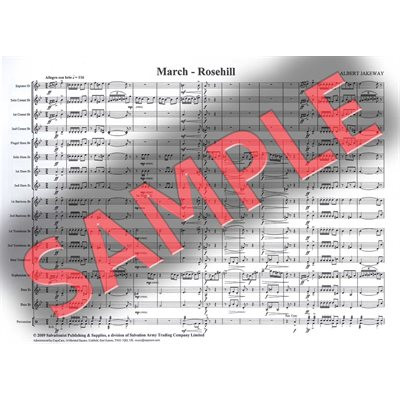Product Description
Comments by Lieut-Colonel Ray Steadman-Allen
The Order of the Silver Star was devised and inaugurated by General Evangeline Booth when Commander-in-Chief of The Salvation Army in the United States of America. This Order is conferred upon mothers who have given a child ᄀᆰ son or daughter ᄀᆰ to the service of God and humanity as officers in The Salvation Army. Membership of the Order is considered a mark of the Army's recognition of its indebtedness as well as its gratitude to the mothers who have trained, and often at great sacrifice to themselves, have consecrated their children for the battle against sin and sorrow ᄀᆰ in which battle the mothers, too, thus have their share. The badge of the Order consists of a silver star on a blue enameled shield.
Appropriately enough, this march includes a song called Mothers of the Silver Star. The song ᄀᆰ music by Bandmaster George Marshall ᄀᆰ was published in The Musical Salvationist for April, 1937. Its words, specially written for the first gathering held in London at which Silver Stars were presented, are by Lieut-Commissioner Arch R. Wiggins.
Introduction ᄀᆰ In the manner of a fanfare, the introduction is derived from the piano introduction to the Marshall song. The utmost clarity and accentual unity is necessary, but probably the only point which will need extra attention will be bar 3 where triplets appear in the latter half of the bar. The diminuendo immediately prior to letter A must not be ignored.
Section A ᄀᆰ Everything here is straightforward.
Section B ᄀᆰ There is an equal division of interest for the first six bars. That is to say, whilst the upper melody will stand out by reason of its high position, at the same time it is intended that the bass solo be given due prominence. From the second time bracket three divisions are seen: cornets and flugel; horns and baritones; trombones, euphonium and basses.
Section C ᄀᆰ A two-bar modulation prepares a return of the introductory fanfare.
Section D ᄀᆰ Here is the verse of the song previously mentioned. Although not essential to the effective presentation of the march, the words of the first verse are nevertheless given for the sake of interest:
There are plenty of instruments playing the tune, so that balance will not be a problem, especially as these melodic parts are marked up one degree. Do not allow the staccato crotchets to be a mere 'peck': they are in reality full-length quavers with a certain militant lightness of step. Let the various solo cornet interpolations be neat yet decisive.
- In proud acclaim we honor those
- Who dared to suffer loss
- When son or daughter left the home
- To lead men to the Cross:
- Who bade their children heed the Call,
- Nor would their course debar -
- The mothers of our officers,
- Who wear the Silver Star.
Section E ᄀᆰ Now follows the chorus. There is nothing in the arrangement to cause any trouble: just let it all swing along in true rhythmic march style. The chorus words are:
- Mothers of the Silver Star,
- Sons and daughters near and far
- Give God praise for all you are
- To them and the dear old Army:
- Mothers of the Silver Star,
- Loved of children near and far,
- God be praised for all you are -
- The pride of our God-blessed Army.
Section F ᄀᆰ This will be seen to be a reprise of the introduction.
Section G ᄀᆰ With a minor deviation toward the end, this is a reprise of section A. The deviation is in the last three bars where the music remains in the tonic key, unlike the beginning of section C where there was a modulation to the subdominant key of Bb.
Section H ᄀᆰ This section is part episode, part reprise of a portion of section B. The band must be well unified wit the figures crisply articulated.
Sections F, G and H are, in effect, a recapitulation of the first part of the march written out in full. This has been necessary in view of incidental modulations to keep the tonality in the tonic key and to provide for a repetition of the 'theme chorus' which brings the march to a conclusion.
Section I ᄀᆰ Here is the 'theme chorus' referred to above. The tune must at all times be clearly heard, the solo cornet decoration being kept within bounds, yet not effaced.
(view series guide)
Produced by The Salvation Army, SP&S, UK













